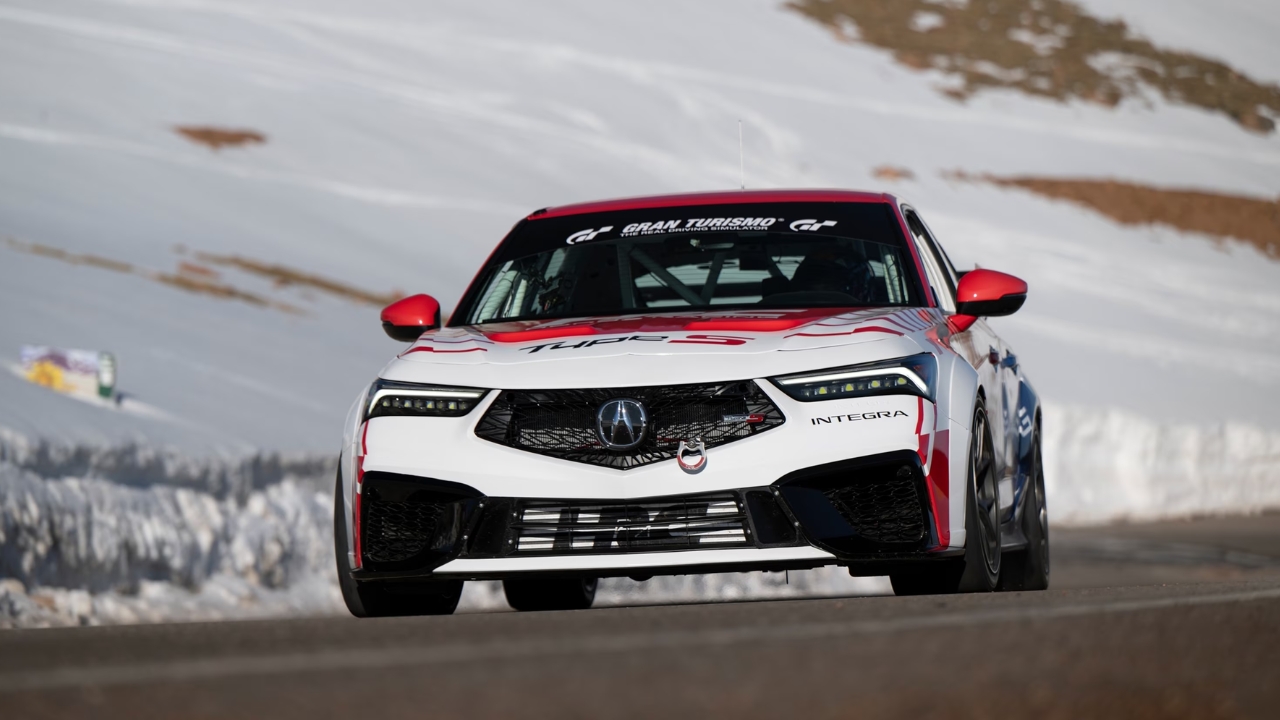Racing veteran Katherine Legge has conquered IndyCar ovals at 230 mph, navigated IMSA endurance battles, and even piloted the radical DeltaWing. Yet “It’s probably the most dangerous but the most exhilarating race you can do. I’ve never felt so alive being so close to falling off the edge of a cliff,” she reveals about the Pikes Peak International Hill Climb. The British-born driver, now in her second year attacking America’s Mountain with Acura’s Integra Type S DE5, missed the front-wheel-drive record by just three seconds in 2024.
The Altitude Challenge: Racing in Thin Air
Official Reference: Link in Bio – Link tree | Beacons Profile
“The first time I went to the top last year, I climbed the stairs in the tourist center and I was so out of breath. And I got a headache and I wasn’t feeling great,” Legge explains about her initial encounter with Pikes Peak’s 14,115-foot elevation. The mountain’s summit sits in what the USGS classifies as an extreme high-altitude environment, where oxygen levels drop dramatically.
“So they say that you lose almost 100 horsepower from the bottom to the top. And you can definitely feel it on the steep stuff as you get near the top,” she notes. Both driver and machine suffer as they climb from the 9,390-foot starting elevation to the 14,115-foot summit – a gain of nearly 5,000 feet in just 12.42 miles.
Learning 156 Turns Without a Simulator
Unlike the Indianapolis 500, where drivers can practice on state-of-the-art simulators, Pikes Peak demands old-school preparation. “I learned it old school. I watched video over and over again, rewinding and going again for hours,” Legge reveals. She studies footage obsessively, using unconventional landmarks like “port-a-loos” and snow stakes as reference points.
The mountain’s 156 turns create a memorization challenge comparable to Germany’s notorious Nürburgring. “There’s obviously nothing like actually driving it, where you get the sense of the elevation and the drop-off,” she emphasizes, explaining why video study can only go so far.
Weather: The Ultimate Wild Card
Pikes Peak’s weather remains completely unpredictable. During the 2025 event, “foul weather prevented you from completing the run and challenging the record,” forcing race organizers to stop the event mid-competition. Snow was recorded in every month except one very warm August according to historical USGS weather data, making conditions constantly challenging.
The Physical and Mental Toll
Oxygen Deprivation Effects
“When we do testing, when we’re practicing, we run oxygen only on the top part [of the hill]. Last year I tried to do some altitude training, like running up the Garden of the Gods, and climbing the Manitou Incline,” Legge explains her preparation regimen. The thin air at 14,115 feet elevation creates cognitive challenges that can affect split-second racing decisions.
Psychological Pressure
“Nobody can get 156 turns exactly spot on, right?” Legge asks rhetorically. She admits feeling like she “probably left 30 seconds on the hill” during her rookie attempt, highlighting the mental pressure of attempting perfection on America’s most dangerous course.
Pikes Peak Racing Statistics
| Challenge Category | Impact Level | Legge’s Solution |
|---|---|---|
| Altitude Sickness | Severe | Oxygen system + training |
| Course Memorization | Extreme | Video study + practice runs |
| Weather Variability | Unpredictable | Tire strategy adaptation |
| Vehicle Power Loss | 100hp reduction | Engine tuning for altitude |
| Physical Demands | High | Altitude conditioning |
Real Examples by Website Article Type:
- Motorsports Analysis (RACER): Technical driving insights and veteran perspective
- Mainstream Sports (ABC News): Human interest angle with safety focus
- Automotive Enthusiast (Car and Driver): Vehicle performance and technical challenges
- Event Coverage (The Drive): First-person race day experience
FAQs
Q: How dangerous is Pikes Peak compared to other races?
A: Legge calls it “the most dangerous race you can do” due to cliff edges and weather.
Q: What’s the biggest physical challenge?
A: Altitude sickness and oxygen depletion at 14,115 feet elevation affects both driver and car.
Q: How do drivers learn the course?
A: Through intensive video study and limited practice runs, as no simulator exists.
Also Read:-6 Chinese Zodiac Signs Set to Attract Big Luck and Wealth on July 2 to July 5, 2025
